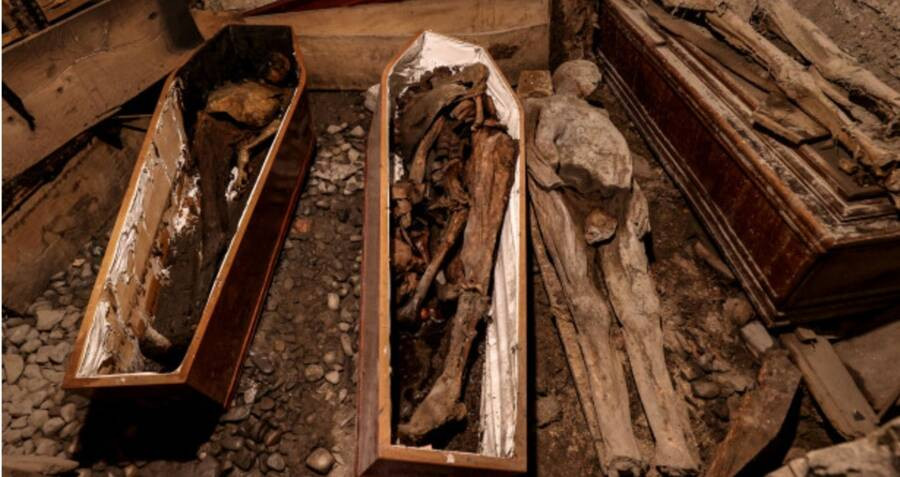A man accused of arson and destroying “priceless” ancient mummies following a fire at St Michan’s Church in Dublin has been further remanded in custody while prosecutors gather evidence for his trial.
Christian Topiter (38), who has been in custody on remand for over three months, appeared before Judge Alan Mitchell at Cloverhill District Court on Tuesday.
Mr Topiter, previously of Grand Canal House, Lower Rathmines Road, Dublin 6, was originally charged with causing criminal damage on June 11th at St Michan’s Church to mummified remains, property of Church of Ireland Archdeacon of Dublin & Vicar of St Michan’s Church David Pierpoint. However, on Tuesday, the Director of Public Prosecutions (DPP) authorized that the charge be replaced with another similar one stating that the damage was caused by arson. Garda James Kenny said Mr Topiter made no reply when the offence was put to Mr Topiter. However, he told the Garda, “That wasn’t me,” in response to a second fresh charge for robbing a person in Smithfield, Dublin, of a suitcase on the same date.
The DPP has directed that Mr Topiter be sent forward for trial on indictment before a judge and jury in the Dublin Circuit Criminal Court, which has broader sentencing power. The DPP also said Mr Topiter could be sent forward on a signed plea of guilty, should that arise.
The Evidence and the Case
The blaze and resultant water damage is believed to have ruined five mummified remains, including an 800-year-old artefact known as ‘The Crusader.’ The other mummies date back 400 years.
Garda Kenny had told a bail hearing on June 12th that there was CCTV evidence and alleged the accused was arrested shortly afterwards wearing distinctive clothing. A witness allegedly told gardaí that there was a person “locked behind gates where this incident occurred, where he would have had to forcibly enter”. Mr Topiter lived 200 metres away in a hostel beside Merchant Quay. Garda Kenny said historical artefacts of this nature were priceless and irreplaceable. The Garda maintained that the offence was at the higher end of criminal damage offences, which could carry a maximum 10-year sentence.
The Defence Argument
Responding to bail objections, the defence had said Mr Topiter had “clear ties” to Ireland and was in a four-and-a-half-year relationship with his fiancée. His solicitor argued that there was no evidence before the court that his client would interfere with witnesses. That court hearing was also told the accused had been in a stable relationship, worked as a security guard, received social welfare payments, and participated in a charity soup run. The defence submitted that Mr Topiter had an immigration identity card issued by gardaí, was presumed innocent, and would obey conditions. The hearing also told he had no history of serious offences.
The Next Steps
Judge Mitchell noted that the State needed more time to complete the book of evidence, which needs to be served on the accused before he is sent forward for trial. The case resumes on October 15th next.
The events at St. Michan’s Church have sent shockwaves through Ireland and beyond, highlighting the vulnerability of historical treasures to acts of vandalism. The outcome of this trial will have far-reaching implications for the protection of cultural heritage and the consequences of criminal damage.
The Aftermath: A Community Remembers
The community of Dublin is grappling with the loss of a significant part of its history. St. Michan's Church, a renowned historic landmark, has been a place of worship and a source of fascination for centuries. The mummies, particularly the 800-year-old Crusader, were a testament to the rich past of the city and a draw for tourists from around the world. The damage inflicted on these relics has left a void in the cultural tapestry of Dublin. Beyond the legal proceedings, there is a sense of grief and a collective desire to preserve and protect the irreplaceable treasures that define the city’s heritage. The incident serves as a stark reminder of the fragility of history and the importance of safeguarding cultural heritage for future generations.
















